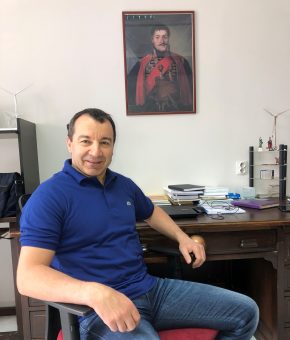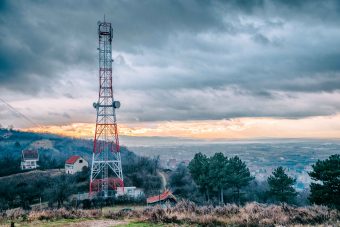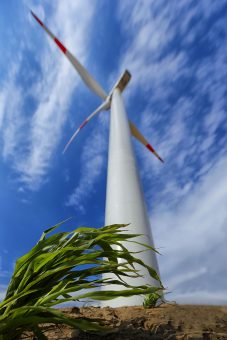Professor Zeljko Djurisic lectures at the Faculty of Electrical Engineering in Belgrade. According to anonymous claims on the portal “Rate Professor”, there were students who would only come to the faculty because of his lecturers. Regardless of whether these statements were given by nerds who once racked up As or laggers who preferred sipping coffee at a nearby café in relation to lectures, the compliment does not lose significance and testifies to Djurisic’s pedagogical skills and receptivity.

In an interview we conducted recently, Professor Djurisic showed that extensive professional knowledge, turned into numerous books and research paper can adapt to non-specialists as we are. He revealed to us where the exhaustion of coal reserves and the lack of a strategy for decarbonisation of electricity production could lead Serbia and also why engineers prefer to opt for employment in private companies rather than in the public company “Elektroprivreda Srbije”.
EP: Which course of the master studies is the most sought-after, and which one do you consider the most promising in the current labour market conditions?
Zeljko Djurisic: The labour market influences students when choosing a course at the undergraduate level to a large extent. It was particularly felt when the infrastructure of mobile networks in Serbia was built, and then telecommunications were the most popular. The development of renewable energy sources then brought the popularity of energy, and digitization now brings popularity to computer technology.
The labour market does not have a decisive influence on the choice of course on master studies. Engineers are already formed as well as their affinities toward some of the expert areas they acquired during undergraduate studies which determine their choice of study module. On the module of the Electrical Grids and Systems, where I am engaged, there are three courses of master studies: Grids and Systems, Facilities and Equipment and Renewable Energy Sources. Last two to three years, the students’ interest in all three directions is approximately equal. I believe that this is good for the labour market because the projects in the energy sector are complex and cannot be tied exclusively to one segment of the profession.
EP: One of the subjects taught at the PhD studies is the integration of renewable energy sources into the distribution system. What are the optimal parameters which the grid needs to fulfil so that renewable energy sources can be connected to it?

Zeljko Djurisic: Technical conditions for the connection of renewable resources are mainly defined by the regulations. In our country, those are the Regulations on the operation of the distribution and transmission system. These regulations define measurable criteria that must be met so that a power plant can be connected to a distribution or transmission system. However, the problem of the massive integration of renewable sources is not related to the connection point. It represents a systemic challenge. The main limitation of the connection of renewable sources is to ensure the flexibility of the system. It is necessary so that intermittent energy sources, such as solar and wind, could be integrated into the power grid. Flexibility is the ability of the system to provide, in all real connections of generation and consumption, satisfying technical performances of the system: voltage constraints, power flows, safety principles…
EP: What is the general state of our grid? What are the losses of the active power which incurred in the transmission of electricity?
Zeljko Djurisic: The Serbian Electric Power System did not follow world trends, especially in terms of the development of the distribution network. Technical power losses in the distribution network are significantly higher than in the European electricity system and range up to 10 per cent, which indicates the underdevelopment of the network. “Elektroprivreda Srbije” must make an effort to change the existing situation and make the system more flexible. It includes strengthening of critical transmission lines, automation of distribution facilities and installation of advanced relay protection systems, switchgear and measuring equipment. Unfortunately, Elektroprivreda Srbije is an inert system that does not show visible signs for the improvement of the system. Today, there are no jobs in Elektroprivreda Srbije on which young engineers could affirm their knowledge of modern energy. Therefore, they are looking for jobs in private companies rather than in the power utility. That has to change if we want to create an electric distribution system that will keep pace with world trends.
The transmission network is much more developed, and the losses are on the average level of European operators’ networks. Several projects which are in the implementation phase will significantly improve the transmission system. First of all, it is a Trans-Balkan corridor that will represent the main power exchange between eastern and western Europe. The strong interconnection is crucial for the increase of the conditions for the construction of renewable energy sources in our region. Of course, there is still plenty of room for the improvement of the transmission grid, both through the construction of new transmission lines, especially in the regions with good wind sources, and trough the construction of advanced systems for grid monitoring and real-time management. It can provide better capacity utilization and more reliable work in extreme meteorological and other complex conditions.
An essential aspect of improving flexibility is the cooperation between transmission and distribution network operators. It is crucial for the development of auxiliary service market in the new environment in which there is no clear boundary between the producers and the consumers of electricity.

EP How is the power plant which uses renewable energy sources connected to the grid? Are the costs borne by the investor or the Elektroprivreda Srbije and what does that depend on?
Zeljko Djurisic: When it comes to connecting to the distribution grid in a technical sense, small power plants can be divided into those that connect via energy converters and those that are connected directly. The first group includes photovoltaic power plants and modern wind power plants, while biomass power plants and small hydropower plants mainly use synchronous and rarely asynchronous generators that are directly connected to the grid. Technical conditions, which power plants must meet to be connected to a certain point in the power system, are defined for both categories. Often, preferred connection point does not meet the Regulations on the operation of the distribution, and Elektroprivreda requires a connection at remote locations, which further requires the construction of transmission lines, and that represents significant costs for the investor, and it also has a negative effect on the environment. In Europe, it is harder to get a license to build a transmission line than to build a power plant. If it is necessary to build 20 km of transmission in order to connect a power plant of several megawatts, it is not just an issue of the economy. At the Faculty, we have done a lot of research into the effects of the connection of renewable sources and conducted analyses. These research showed that the conditions of connecting could be improved with the use of modern power electronic devices which contribute that both the electric distribution and the investor have benefit from the operation of a small power plant. In this regard, I believe that there is room for the improvement of the existing Regulations and Operation Management of Distribution Networks. Conditions and alternative solutions for the connection must take wider aspects of the plant’s impact on the distribution system. For example, the existing Regulation did not take into consideration the impact which connection of a small power plant has on electricity losses in the distribution system. It is precisely this factor that should define the choice of connection point and also the split of costs between the investor and Elektroprivreda.
EP: Which renewable energy source in Serbia has the most significant potential, and which is the most cost-effective when it comes to the return of the investment?
Zeljko Djurisic: When it comes to the production of electricity, I would place the potential of wind and sun in the first place. In terms of the wind potential, Serbia is on the average level of the European Union and the sun potential is even above the European average. Biomass and geothermal energy have good potential in certain areas, and their most efficient use is the production of heat energy. The production of heat from renewable sources is highly suppressed, and it must be a priority in future strategies for the development of renewable energy sources in Serbia.
The investment repayment rate depends on subsidy, which the state should define only for the upcoming period. The current model of the feed-in tariff is overdated, but it played a role in developing renewable energy technology. Today, the technologies of wind turbines and photovoltaic systems are developed. New subsidy measures are expected to be largely market-oriented. In the free electricity market, the return on the investment is defined by the costs of the production. The investment costs have fallen both for wind farms and solar systems. Thus, the costs of wind power generation at favourable locations in Serbia can be below 50 euros/MWh, while for photovoltaic power plants is somewhat higher. However, it should be kept in mind that the price in the electricity market is significantly variable during the day, thus the profit which power plant gains is influenced by the daily production diagram dictated by wind and sun. It is not the same whether a power plant produces energy in the early morning hours or in the afternoon, so in the future, the systems for energy storage will be developed, and they will provide better economy for wind and solar power plants in the free market conditions.
Prepered by: Jelena Kozbasic
Read the whole interview in the new issue of the Energy portal Magazine on ENERGY EFFICIENCY.



